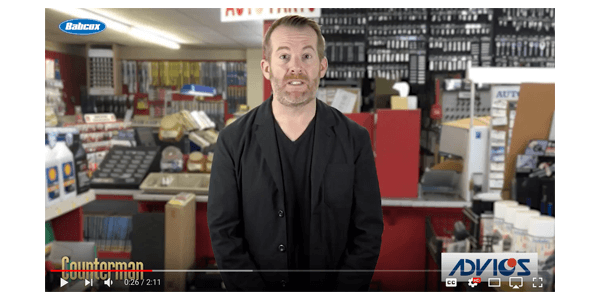How can you ensure your customer’s customer can stop quickly, safely AND quietly? Counter Intelligence is Next!
Hi guys, it’s Mark Phillips. A vehicle’s ability to stop quickly, safely and of course, quietly, depends on the condition of its brake pads. The pads create friction when the brakes are applied, converting the kinetic energy of motion into heat. Most of the heat is dissipated through the brake rotors, but the pads also get hot. A hard panic stop or riding the brakes continually while mountain driving can raise brake pad temperatures several hundred degrees. And, the hotter the pads get, the faster they wear.
There are no recommended replacement intervals for brake pads because pad life varies widely depending on how a vehicle is driven, the type of brake pads on the vehicle, the driver’s braking habits and even the design of the brake system. Frequent stop-and-go city driving in heavy traffic may wear out a set of pads in as little as 30,000 to 40,000 miles – or even faster depending on how aggressively the driver uses their brakes. On the other hand, a set of brake pads on a vehicle that is driven mostly on the highway may last upwards of 70,000 to 80,000 miles or more.
Regardless of how a vehicle is driven, all brake pads eventually wear out and have to be replaced. When pads are worn down to minimum thickness specifications (usually around 1/8th inch), they should be replaced. Other items a customer may need when changing brake pads include rotors, brake fluid, calipers, brake hoses, steel brake lines, brake service tools and/or rear drum brake hardware and shoes. Remember to bring these up whenever you’re speaking to your customers who may be replacing friction. I’m Mark Phillips. And thanks for watching.







